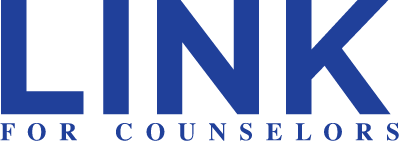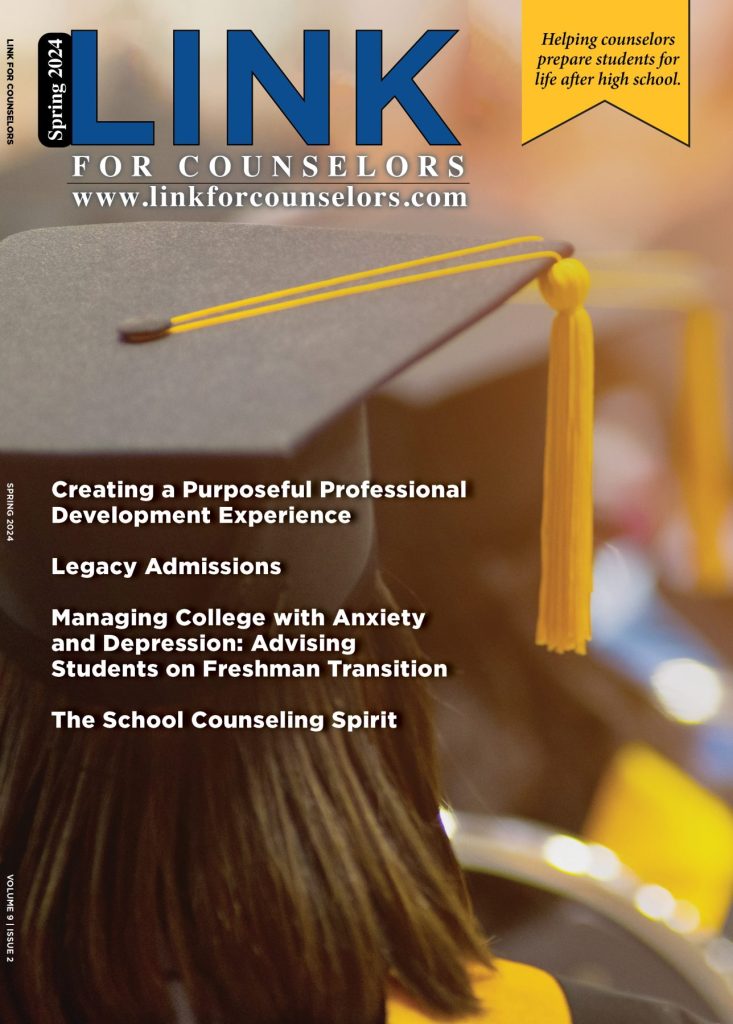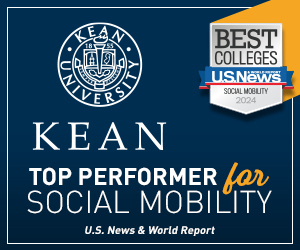All of your students will be in the job market someday (some right even after graduation). Here are 61 terms they should know as they seek that job:
— Applicant Tracking System (ATS)
An application tracking system is a software program that employers use to automate recruitment tracking and screen applicants. Resumes are scored based on keywords and should have clearly identifiable sections to be ranked correctly.
— Asynchronous Communication
Asynchronous communication occurs between team members without the expectation of an immediate response. It is used frequently among distributed workforces to accommodate varying time zones and flexible work schedules.
— Blue Sky Thinking
Blue sky thinking is creative brainstorming that allows you to dream without limits based on reality. The idea is that we unintentionally limit our creativity with checks and balances, but during blue sky thinking, we allow ourselves to dream without judgement.
— Career Development
Career development means actively managing your career growth through education, experience, and other activities.
— Chronological Resume
A chronological resume is a traditional resume format that outlines job history in reverse chronological order, beginning with your most recent position.
— Company Culture
Company culture is the sum of a company’s beliefs, behaviors, values, and formal and informal systems. Culture is essentially determined by how things are done in a particular workplace.
— Company Research
Company research means exploring potential employers to gauge their mission, values, and culture and gathering information relevant to the position and the job description.
— Compressed Workweek
A compressed workweek entails working longer hours in fewer days, such as four 10-hour days or three 12-hour days, rather than five eight-hour days.
— Cover Letter
A cover letter is a short letter of two to three paragraphs introducing yourself to the hiring manager and highlighting a few skills or experiences that make you an ideal candidate. Generally, a cover letter accompanies your resume unless a posting explicitly states not to include one.
— Coworking Space
Coworking spaces are workspaces available to rent for various lengths of time, from hourly to a long-term basis. Coworking spaces provide a more professional setting and collaboration opportunities than a home office.
— Curriculum Vitae (CV)
CV is short for curriculum vitae, which means “course of life” in Latin. As such, a CV is a detailed account of the course of your entire professional life, including every position you’ve ever held, awards you’ve won, grants you’ve received, research you’ve conducted, and anything else related to your professional history. A CV is similar to but longer than a resume and is not tailored to a specific job posting.
— Digital Nomad
A digital nomad is someone who works virtually from various locations. Digital nomads move from location to location but use technology and communication tools to stay digitally connected while working and traveling.
— Distributed Company
In a distributed company, the majority (if not all) employees work from remote locations. Communication generally involves strategies to ensure everyone feels included, rather than focusing on physical interactions.
— Elevator Pitch
An elevator pitch is a short pitch (short enough that you could give it during an elevator ride) that offers an overview of who you are, your career goals, and why you’re an excellent fit for a role.
— Exempt Employee
An exempt employee is exempt from federal and state labor laws, meaning they are not eligible for overtime pay. They are generally in salaried positions, rather than hourly positions.
— Flexible Job
A flexible job entails various flexible work arrangements that fall outside of the traditional 9-to-5, Monday-through-Friday, in-person work arrangement.
— Flexible Schedule
A flexible schedule comes with varying degrees of control over when you perform your job tasks. Policies vary significantly between companies and positions.
— Freelance
Freelancing is independent contracting with an organization to perform agreed-upon duties in exchange for specified compensation. Contracts will vary based on the length of tasks and commitments. When freelancing, you’ll be responsible for your taxes and benefits.
— Functional Resume
A functional resume is a type of resume format that emphasizes skills and accomplishments vs job history.
— Gig Economy
The gig economy is a labor market with short-term positions and independent contracting, instead of more permanent arrangements.
— Green Jobs
Green jobs are positions with companies that focus on sustainability, renewable energy, and other green initiatives.
— Hard Skills
Hard skills are technical skills in a specialized field, such as coding or proficiency with specific software.
— Hiring Manager
Hiring managers are decision-makers in charge of the recruitment process but not necessarily the manager you’ll report to if you are awarded the job.
— Hybrid Remote
A hybrid remote job entails dividing work time between in-person time at the company’s office and workdays outside of company-provided offices. The schedule of days in-office vs days at home or elsewhere varies by company and position.
— Hybrid Resume
A hybrid resume is a resume format that combines elements of both chronological and functional formats.
— Informational Interview
An informational interview is a meeting with someone in the industry or company you’re interested in. The purpose of an informational interview is networking and gathering information, rather than seeking a job offer.
— Interview
An interview is the process of evaluating a candidate for an open position by asking questions about their experience, skills, and qualifications and determining if they’re a fit for the role.
— Job Alerts
Job alerts are notifications that inform candidates when jobs of interest become available.
— Job Board
A job board is a website that hosts job postings for open positions at different companies. Job boards range from generic (posting every available job) to niche-specific (targeting one industry or job type).
— Job Fair
A job fair is an organized event with specified times where businesses, schools, and other organizations come together to connect job seekers with potential employers.
— Job Reference
A job reference is a professional or personal contact who can speak to your skills and experience, usually for the purpose of providing a recommendation to potential employers.
— Job Seeker SEO
Job seeker SEO entails strategically using the best keywords in your profiles and resume to ensure that you show up as a match for your ideal position when recruiters search for applicants.
— Keywords
Keywords are specific words or series of words that match those used in a job search or posting.
— Mentorship
A mentorship is a one-on-one relationship between a mentor and mentee focused on exchanging knowledge, supporting career growth, and providing feedback and guidance.
— Negotiation
Negotiation is the process of considering and sharing proposals with a prospective employer in order to reach an agreement on salary, benefits, hours, or other job terms.
— Networking
Networking entails developing relationships in your professional and industry circles to support career growth and development.
— Networking Event
A networking event is an organized event, typically in the form of a meeting or seminar, that brings together professionals from various industries to meet, share information, and grow their professional contacts.
— Nonexempt Employee
A nonexempt employee is not exempt from federal and state labor laws and must be paid overtime at time-and-a-half for any hours worked beyond 40 hours in a week. This generally applies to those in hourly positions, rather than salaried positions.
— Paid Time Off (PTO)
Paid time off (PTO) is a paid leave policy offered by employers that allows employees to use days off for vacation or personal time.
— Panel Interview
A panel interview, otherwise known as a team interview, is an interview conducted by two or more people at the same time. A panel interview can include managers, supervisors, team members, HR representatives, and other company decision-makers.
— Part-Time Job
The Affordable Care Act (ACA) has defined part-time hours as working less than an average of 30 hours a week.
— Passive Job Seeker
A passive job seeker is a person who is open to new job opportunities but not actively seeking out new positions or responding to listings. Instead, they might attend networking events or join professional organizations to increase their visibility.
— Personal Branding
Personal branding is the way you market your career focus and expertise. Effective personal branding means providing a cohesive message across your social media channels and application materials.
— Personal Reference
A personal reference is a referral from someone who has known you in a nonprofessional capacity, such as a friend or family member.
— Portfolio
A portfolio is a collection of work samples that demonstrate your skills and expertise, usually in the form of a website or an app.
— Recruiter
A recruiter is a professional responsible for finding the best candidate for a position based on skill requirements. Recruiters can be independent professionals or company employees.
— Remote-First Company
In a remote-first company, most employees work from remote locations, rather than a central one.
— Remote-Friendly
A remote-friendly company has policies and procedures in place to accommodate remote work but is not a fully distributed team.
— Remote Job
Remote jobs are positions that can be performed outside of company-provided offices.
— Results-Only Work Environment (ROWE)
A results-only work environment (ROWE) is a type of work environment in which employees are assessed by the work they produce, as opposed to hours on the job or time spent in the office.
— Resume Summary
A resume summary is a statement near the top of a resume that provides an overview of your experience, accomplishments, and qualifications.
— Resume Writing Services
Resume writing services assist job seekers in crafting a customized resume tailored to the position they are applying for.
— Seasonal Job
A seasonal job is a temporary role that is available during certain seasons, such as summer jobs and holidays.
— Skills, Weaknesses, Opportunities, Threats (SWOT) Analysis
SWOT analysis is a method of assessing a job opportunity to determine and communicate how your skills can benefit an employer.
— Soft Skills
Soft skills are less tangible but highly sought-after qualities, such as communication, team-building, problem-solving, and creativity.
— STAR Method
The STAR method is an interviewing technique that helps you communicate specific examples of your skills. STAR stands for situation, task, action, result. By framing your responses as stories that cover all of those details, you can paint a clear picture for the interviewer.
— Temporary Job
A temporary job is a role that is available year-round but for a limited and defined amount of time, such as a six-month temporary assignment to cover someone.
— Transferable Skills
Transferable skills are skills that you have developed in your prior work experience in other positions, industries, or sectors that will benefit you in a new role because they can be applied, or transferred, to another role.
— Virtual Interview
A virtual interview is any interview that isn’t completed in person. Standard interview technologies include videoconferencing and phone interviews.
— Work-Life Balance
Work-life balance entails maintaining equal focus between your career and personal life by creating boundaries to fit your unique scheduling needs.
— Work-Life Integration
Work-life integration entails integrating work and personal time throughout the day. Work-life integration looks different for everyone, but someone who integrates work time and personal time might work a few hours early in the morning, take a break to walk the dog, return to work for a couple more hours, take a lunch break in the afternoon, and then return to work for the remainder of the day.
Here is a link to FlexJobs post and blog where they have links to more information on each of these terms: https://www.flexjobs.com/blog/post/job-search-terms-should-know-complete-glossary












